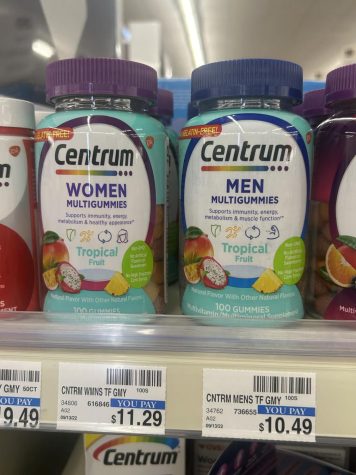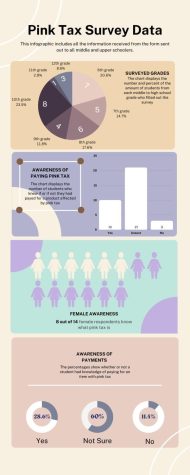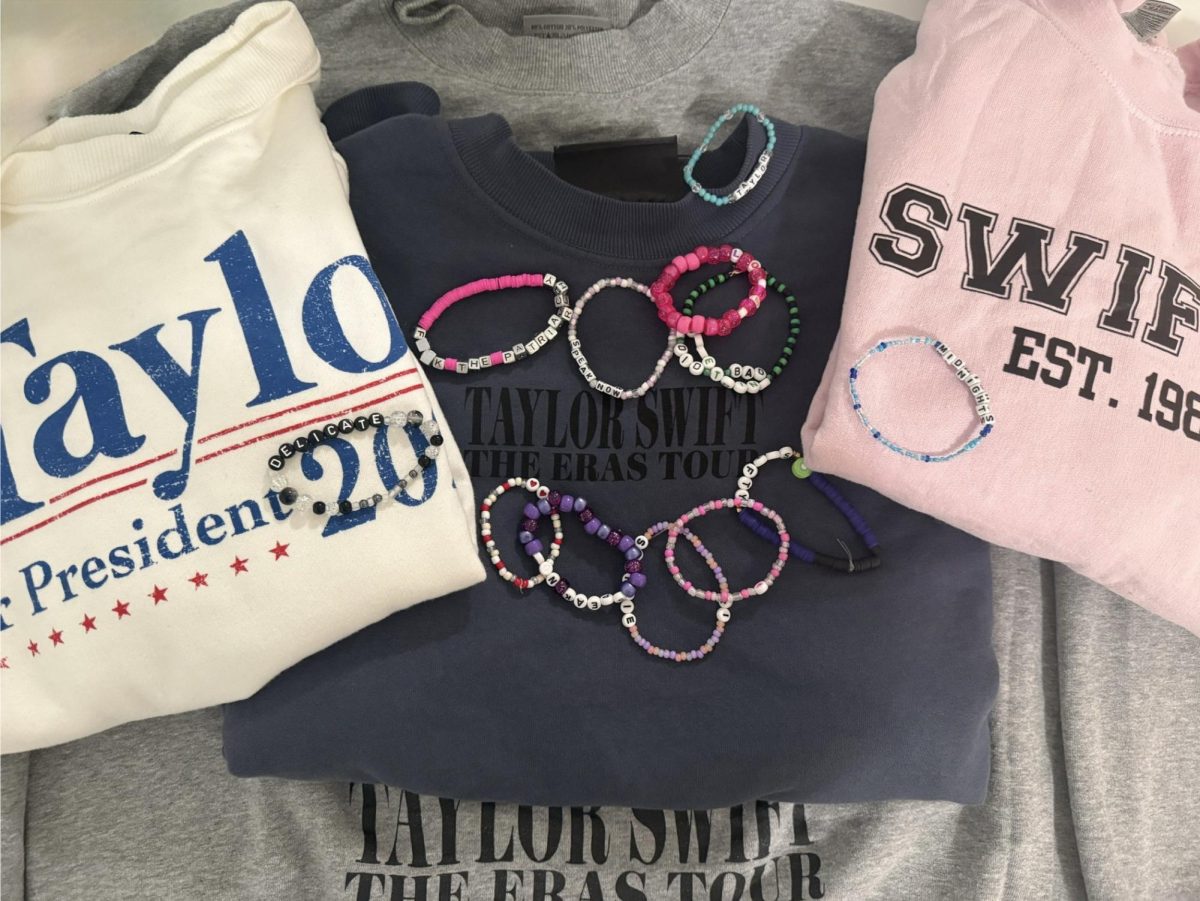Pink Tax vs Women: Who Wins the Economic Battle?
A male and a female student holding a sign symbolizing the extra retail tax for women. Photo by Avital Mullokandova.
February 10, 2023
Have you ever gone on your weekly shopping trip and noticed that necessary women’s products are more expensive than men’s? This is due to what is known as the pink tax. Women’s products have been marketed for higher prices than men’s products for years without a reasonable basis.
This phenomenon called the “pink tax” is associated with gender-based price discrimination, which affects women disproportionately. The pink tax is not an actual tax addition, but instead an increase in retail price. The extra money added to the product’s retail price does not go to the government; it benefits the company.
Razors, gloves, and even gender neutral medication are all priced differently based on the color of the packaging, referring to the gender it was made to attract. Usually, pink bottles made for women are more costly than the same product in blue made for men.

A study done by the New York City Department of Consumer Affairs has shown that women’s clothing is 8 percent more expensive than men’s, and women’s hygiene/personal care products cost 13 percent more than men’s. The pink tax isn’t only an issue in the United States, but extends to international markets as well. In the United Kingdom, girls’ school uniforms are 12 percent more expensive than boys’ school uniforms. Women in Argentina, France, Italy, Australia, and Germany are all experiencing the same issues with the pink tax as well.
To learn more about this matter, I contacted with Nebraska State Senator Megan Hunt, representative of District 8. Senator Hunt gave me the opportunity to have access to the bill speaking notes that she used to bring awareness to Nebraskans about the prevalence of the pink tax in the state. Her initial piece of legislation didn’t pass, but a different representative, Senator Terell McKinney, helped the state get rid of the pink tax in all stores. The main argument in the notes provided by Senator Hunt was that women who mensturate are more likely to experience homelessness, as women are paid significantly less than men. The little extra money those women have are spent on hygiene products, which is already out of budget.
I sent out a quick survey to the Hyman Brand Hebrew Academy’s (HBHA) middle and upper school students to determine their input and prior knowledge on the pink tax. 41.2% of the students who replied were female, 47.1% of the students who replied were male, and 11.8% of the students who replied identified as other. Out of the female respondents, 57.1% of females had a perfect understanding of what pink tax is, while only 43.75% of males claimed to share this level of understanding. 7 out of the 16 (43.75%) male respondents claimed to have perfect understanding of pink tax, while 1 out of the 4 (25%) other respondents claimed to have a perfect understanding. The majority of the informed students were from the 10th grade.

Out of the 34 respondents, only 16 gave an accurate description of the pink tax and were aware of it. The awareness that society has on the pink tax is low; only around half of the students surveyed had no prior knowledge on the topic. 60 percent of the students were unsure if they had spent extra money for an item just because it wasn’t gender-neutral or for men.
Currently, most pharmaceutical and convenience stores in Kansas still charge an extra 4-7 percent on women’s hygiene and menstrual products. There haven’t been any reports on Kansas senators attempting to get rid of the pink tax in stores, but we hope there will be many in the future. Citizens of any country, state, and city should know what they are paying for, and should not be overcharged simply based on gender.
To learn more, read the following government document on the pink tax: Click Here












































































